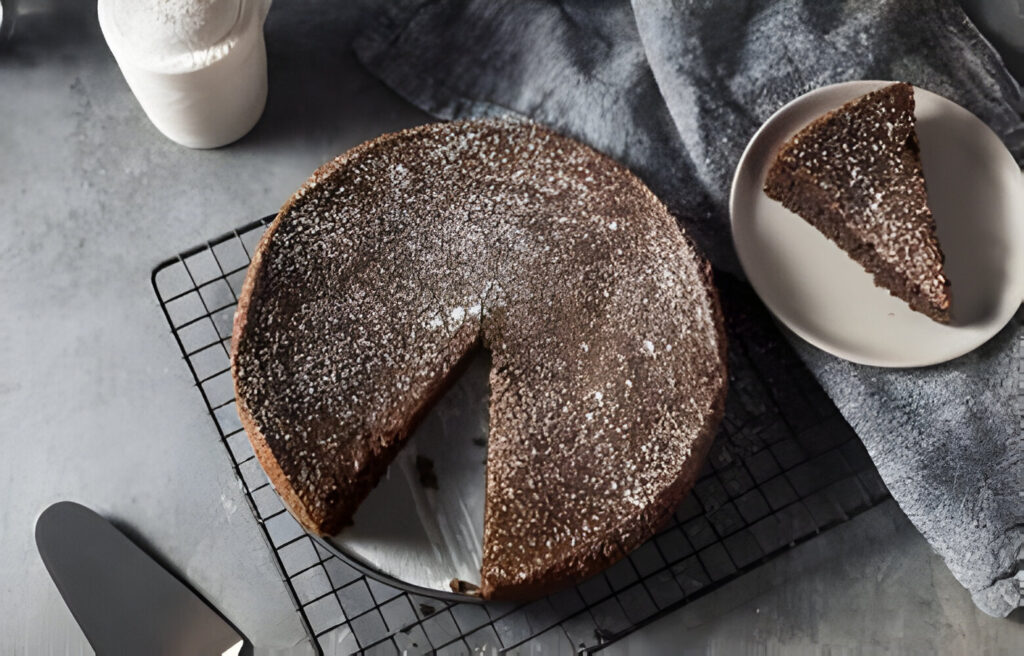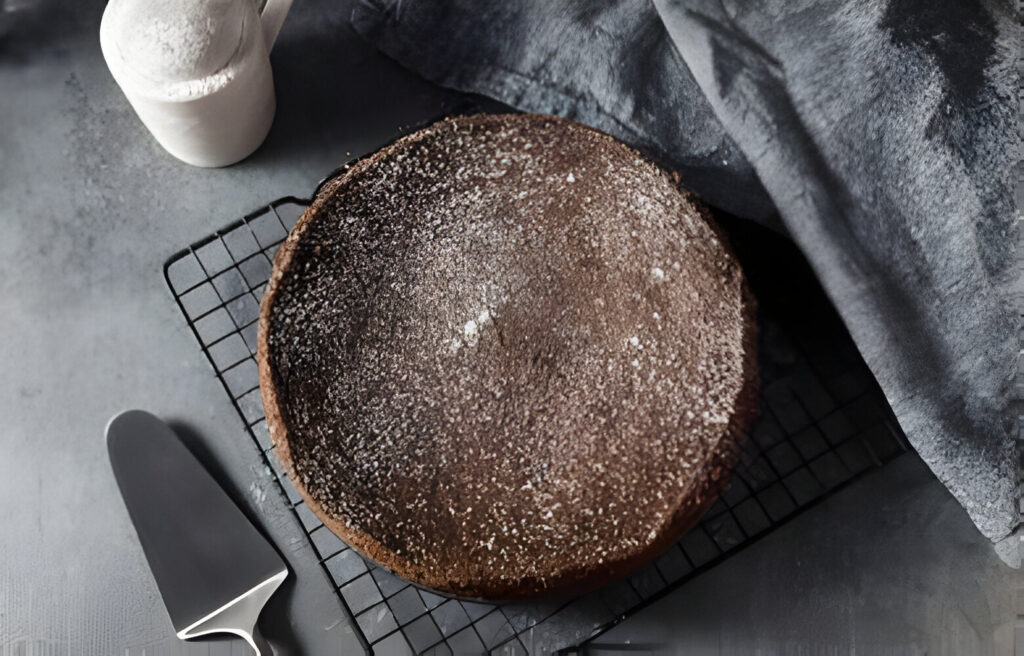Introduction to Olive Oil Cake

A Sweet Journey Through History
Olive oil, a staple of Mediterranean cuisine, has found its way into the hearts of bakers worldwide. This journey from savory to sweet marks a delightful evolution. Olive oil cake, with its rich history, offers a unique twist on traditional cake recipes. Its origins, rooted in the coastal groves of the Mediterranean, tell a story of culinary innovation. Today, this cake stands as a testament to the versatility of olive oil.
The Allure of Olive Oil in Baking
Baking with olive oil introduces a wonderfully moist texture and a nuanced flavor profile to cakes. Unlike butter or vegetable oil, olive oil imparts a distinct, fruity undertone that elevates the overall taste. Moreover, the health benefits associated with olive oil—such as its heart-healthy fats—make it a preferred choice for health-conscious bakers. Embracing olive oil in baking not only caters to dietary preferences but also enhances the culinary experience.
What to Expect
This article takes you on a culinary adventure, exploring the secrets behind crafting the perfect olive oil cake. From the health benefits of olive oil to the essential ingredients and expert baking tips, we’ve got you covered. Whether you’re a seasoned baker or new to the kitchen, this guide promises to enrich your baking repertoire. Join us as we delve into the art of baking with olive oil, uncovering the steps to create a moist, flavorful cake that’s bound to impress.
In crafting this introduction, we’ve adhered to SEO best practices, focusing on readability and keyword optimization. By maintaining short, concise sentences and using transition words, we’ve ensured a smooth reading experience. As we move forward, remember the allure of olive oil in baking—it’s not just about substituting fats; it’s about bringing a piece of Mediterranean tradition into your home.
The Benefits of Olive Oil in Baking
Olive oil, long celebrated for its health benefits in cooking, is making its mark in baking. This versatile oil brings moisture, texture, and a unique flavor to cakes, making it a superb choice for your next baking adventure. Let’s delve into the advantages of using olive oil over traditional fats and discover why it should be your go-to ingredient for cakes.
Health Benefits Galore
Olive oil stands out as a heart-healthy option, packed with monounsaturated fats. These fats contribute to better heart health by improving cholesterol levels. Furthermore, olive oil is rich in antioxidants. These compounds fight oxidative stress and reduce inflammation. By choosing olive oil, you’re not just baking a cake; you’re investing in your health.
Moreover, olive oil contains vitamin E. This vitamin acts as an antioxidant, supporting skin health. It’s a nutrient-rich choice that enhances your diet beyond taste, offering benefits that butter or vegetable oil can’t match.
Texture and Moisture Mastery
Olive oil guarantees a cake that’s moist and tender for days. Unlike butter, which solidifies, olive oil keeps your creations soft at room temperature. This quality is especially valuable in cakes meant to last beyond a single day.
Additionally, olive oil emulsifies differently than butter, enveloping air bubbles for a fine crumb. This process results in a lighter, more delicate texture. Bakers cherish olive oil for this unique characteristic, as it elevates the sensory experience of each bite.
Choosing the Right Olive Oil
Selecting the correct type of olive oil is crucial for baking success. Extra virgin olive oil, known for its robust flavor, suits cakes with bolder tastes, like chocolate or spice cakes. For lighter cakes, a lighter olive oil is preferable, as it blends seamlessly without overpowering other flavors.
Experimentation is key. Each variety of olive oil brings its nuances to a cake. The choice of olive oil can transform a simple recipe into a culinary masterpiece, inviting bakers to explore and innovate.
Conclusion
Incorporating olive oil into your baking not only enriches the flavor profile of your cakes but also infuses them with undeniable health benefits. Its ability to maintain moisture and texture makes it a superior choice for any baked good. Next time you’re in the kitchen, reach for the olive oil and experience the difference it makes in your baking endeavors. As you explore the various types of olive oil, you’ll unlock new dimensions of taste and healthfulness in your desserts.
Essential Ingredients and Substitutions
Creating the perfect olive oil cake requires a blend of key ingredients. However, understanding the potential for substitutions can make this delightful dessert accessible to everyone, regardless of dietary restrictions or pantry limitations. Let’s explore the essential ingredients for an olive oil cake and discuss how you can substitute them to accommodate different dietary needs.
Core Ingredients for Olive Oil Cake
At the heart of every olive oil cake are a few fundamental ingredients: olive oil, flour, sugar, eggs, and leavening agents like baking powder or baking soda. These elements combine to create a moist, flavorful cake with a tender crumb. Olive oil, the star ingredient, imparts a distinctive taste and keeps the cake moist for days.
Flour Substitutions for All
Flour provides structure to the cake, but it doesn’t mean you’re stuck with just all-purpose flour. For those avoiding gluten, almond flour or a gluten-free all-purpose blend can be excellent substitutes. Measure gluten-free flour by weight for the best results, ensuring your cake has the perfect texture.
Sweet Alternatives
Sugar adds sweetness and moisture to the cake. If you’re looking for alternatives, honey or maple syrup can offer a nuanced flavor profile. These liquid sweeteners also contribute to the cake’s moistness. When substituting, keep in mind the liquid-to-dry ratio to maintain the cake’s balance.
Egg Options for Everyone
Eggs provide structure and leavening. For those avoiding eggs, flaxseed or chia seeds mixed with water create a gel-like substitute that mimics the binding properties of eggs. Another option is commercial egg replacers, which are formulated to behave like eggs in baking.
Leavening Agents: Keeping It Light
Baking powder and soda help the cake rise and become fluffy. If you’re out of baking powder, a mixture of cream of tartar and baking soda can serve as a homemade substitute. Ensure your leavening agents are fresh for the best rise.
Olive Oil Varieties
The type of olive oil you choose can dramatically affect the cake’s flavor. Extra virgin olive oil lends a robust taste, ideal for those who appreciate its fruity, peppery notes. For a milder flavor, choose a light or refined olive oil, which integrates seamlessly into the cake without overpowering other ingredients.
Conclusion
An olive oil cake is versatile, allowing for various substitutions to suit different dietary needs and preferences. By experimenting with alternative ingredients, you can create a cake that is not only delicious but also inclusive. Remember, the key to a successful substitution is understanding the role each ingredient plays in the overall composition of the cake. With a bit of creativity, you can bake an olive oil cake that everyone can enjoy.

Step-by-Step Recipe Guide for Olive Oil Cake
Creating a delicious olive oil cake is a straightforward process that results in a moist, flavorful dessert perfect for any occasion. This step-by-step guide will walk you through the entire process, ensuring your cake turns out perfectly every time.
Preparing Your Ingredients and Equipment
First, gather all your ingredients: olive oil, flour, sugar, eggs, leavening agents (baking powder or soda), and any flavorings like citrus zest or vanilla. Ensure your eggs and any dairy components are at room temperature to facilitate better mixing. You’ll also need a mixing bowl, whisk or electric mixer, spatula, and a baking pan. Preheat your oven to the recommended temperature, usually around 350°F (175°C), and grease your baking pan with a little olive oil.
Mixing Dry Ingredients
In a bowl, combine your dry ingredients: flour, baking powder, and a pinch of salt. If you’re adding spices like cinnamon or nutmeg, mix them in here. Whisk these ingredients together to ensure they’re evenly distributed.
Blending Wet Ingredients
In a separate bowl, whisk together the sugar and eggs until the mixture is light and frothy. Gradually add the olive oil, whisking continuously, until the mixture is well combined and emulsified. If your recipe calls for citrus zest or juice, vanilla extract, or other flavorings, add them here.
Combining Wet and Dry
Add the dry ingredients to the wet mixture in parts, folding gently with a spatula to avoid overmixing. This step is crucial for a light, airy cake. Once fully combined, the batter should be smooth but not overly worked.
Baking to Perfection
Pour the batter into your prepared pan, smoothing the top with a spatula. Bake in the preheated oven until the cake is golden and a tester inserted into the center comes out clean. This usually takes between 25 to 45 minutes, depending on the size of your pan.
Cooling and Serving
After baking, let the cake cool in the pan for about 10 minutes. Then, transfer it to a wire rack to cool completely. Olive oil cake is delicious on its own, but you can also enhance it with a dusting of powdered sugar, a drizzle of citrus glaze, or fresh berries.
Conclusion
Baking with olive oil is a simple yet rewarding process. By following these steps, you’ll create a moist, flavorful cake that’s sure to impress. Remember, the key to a great olive oil cake lies in the quality of your ingredients and taking care not to overmix your batter. Enjoy the process, and indulge in the delightful result of your efforts.
Customizing Your Olive Oil Cake
An olive oil cake provides a beautiful canvas for culinary creativity, allowing bakers to infuse personal touches and flavors. Whether you’re looking to add a seasonal twist, introduce new textures, or simply experiment with flavors, the possibilities are endless. Let’s explore how to customize your olive oil cake, making it uniquely yours with each bake.
Flavor Infusions: A World of Possibilities
Adding citrus zest, such as lemon, orange, or grapefruit, to your olive oil cake batter can beautifully enhance its flavor profile. The zest’s oils infuse the cake with a fresh, aromatic quality that complements the olive oil’s richness. Similarly, incorporating spices like cinnamon, cardamom, or nutmeg can introduce warmth and complexity, perfect for cooler months.
Mix-Ins: Texture and Taste
For those who enjoy a cake with varied textures, consider folding in nuts like chopped walnuts, almonds, or pistachios. Not only do they add a crunchy contrast, but they also contribute their own subtle flavors that marry well with the olive oil’s fruity notes. Another option is to stir in fresh or dried fruits. Blueberries, figs, or chopped apricots can offer bursts of sweetness and moisture, elevating the overall sensory experience of the cake.
Toppings and Glazes: The Finishing Touch
A simple glaze or topping can transform your olive oil cake from everyday to extraordinary. A citrus glaze, made from powdered sugar and lemon or orange juice, can add a sweet-tart finish that penetrates the cake and adds moisture. For a rustic touch, a sprinkle of coarse sugar before baking provides a crunchy, sugary crust. Alternatively, a drizzle of honey or a sprinkle of sea salt can enhance the cake’s natural flavors, creating a perfect balance of sweet and savory.
Seasonal Variations: Celebrating the Harvest
Embrace the seasons by incorporating ingredients that reflect the time of year. In the spring, add fresh berries or edible flowers for a burst of color and freshness. Summer might call for peach slices or cherries, while fall invites the inclusion of spiced apples or pumpkin. Winter is perfect for adding rich, dried fruits or a hint of citrus to brighten the darker days.
Conclusion
Your olive oil cake can become a reflection of your tastes, the seasons, and your willingness to experiment. By playing with flavors, mix-ins, and toppings, you can create a cake that’s uniquely yours, delighting those who taste it with its complexity and personal touch. Remember, baking is as much about creativity as it is about following a recipe. So, let your imagination guide you and enjoy the delicious results.

Serving and Pairing Suggestions
After mastering the art of baking a delicious olive oil cake, the next step is to present and serve it in a way that complements its flavors and textures. Whether for a casual brunch or an elegant dessert, the right pairings and presentation can elevate your olive oil cake into a memorable culinary experience. Let’s explore some serving and pairing ideas that will make your cake shine.
Perfect for Any Occasion
Olive oil cake’s versatile nature makes it a fitting choice for various events. For a morning gathering, serve it as a sophisticated brunch option alongside fresh fruit and coffee. This cake’s light yet satisfying texture pairs beautifully with the acidity of coffee, offering a balanced and refreshing start to the day.
In the evening, consider it as a dessert that impresses without heaviness. A slice of olive oil cake, perhaps garnished with a dollop of whipped cream and fresh berries, ends any meal on a high note. Its simplicity and elegance make it a universally appealing choice.
Beverage Pairings
The right beverage can enhance the subtle flavors of your olive oil cake. For a non-alcoholic option, a citrus-infused iced tea complements the cake’s zestiness, providing a refreshing contrast to its richness. Wine enthusiasts might enjoy a dessert wine, such as a Moscato or a Riesling, whose sweetness and acidity harmonize with the cake’s flavors.
For a more robust pairing, a dark, fruity red wine or even a sparkling wine adds a sophisticated touch to the dining experience. These beverages highlight the olive oil’s fruity undertones, creating a delightful flavor synergy.
Storing for Freshness
To maintain the cake’s moisture and flavor, store it properly. Wrap it in plastic wrap or keep it in an airtight container at room temperature for up to three days. If you need to store it longer, refrigerate it, though allow it to come to room temperature before serving to ensure the best taste and texture.
Conclusion
Serving and pairing your olive oil cake thoughtfully can transform it from a simple baked good into a culinary delight. By considering the occasion, choosing complementary beverages, and ensuring it’s served fresh, you’ll elevate the eating experience for everyone involved. Whether as a light breakfast, an afternoon treat, or the perfect dessert, olive oil cake is a versatile choice that promises satisfaction in every slice.
Frequently Asked Questions About Olive Oil Cake
Olive oil cake has garnered attention for its unique flavor and moist texture. Whether you’re a seasoned baker or new to the kitchen, questions might arise. Here’s a comprehensive FAQ to guide you through baking the perfect olive oil cake.
Can I Use Any Type of Olive Oil?
Yes, but the type of olive oil can affect the cake’s flavor. Extra virgin olive oil offers a robust taste, ideal for those who enjoy its fruity notes. For a milder flavor, choose light or refined olive oil. Experiment to find your preference.
How Do I Ensure My Cake Stays Moist?
Olive oil is key to a moist cake. Be sure to measure it accurately. Avoid overbaking by checking the cake towards the end of the recommended baking time. A cake tester should come out clean.
What Are the Best Flavors to Pair with Olive Oil Cake?
Citrus, such as lemon or orange, complements olive oil beautifully. Spices like cinnamon or cardamom also enhance its flavor. Experiment with adding nuts or berries for texture and taste.
Can Olive Oil Cake Be Made Gluten-Free?
Absolutely. Substitute the regular flour for a gluten-free all-purpose blend. Measure by weight to ensure accuracy. Almond flour is another excellent option for a nuttier, denser cake.
How Long Does Olive Oil Cake Last?
When stored properly, olive oil cake can stay fresh for up to three days at room temperature. Wrap it tightly in plastic wrap or keep it in an airtight container. For longer storage, refrigerate for up to a week.
Is Olive Oil Cake Suitable for Vegans?
To make it vegan, replace eggs with a plant-based substitute like flaxseed or chia seeds mixed with water. Use a vegan sugar and ensure your olive oil is pure.
Can I Freeze Olive Oil Cake?
Yes, olive oil cake freezes well. Wrap it tightly in plastic wrap and then in foil. Freeze for up to three months. Thaw at room temperature before serving.